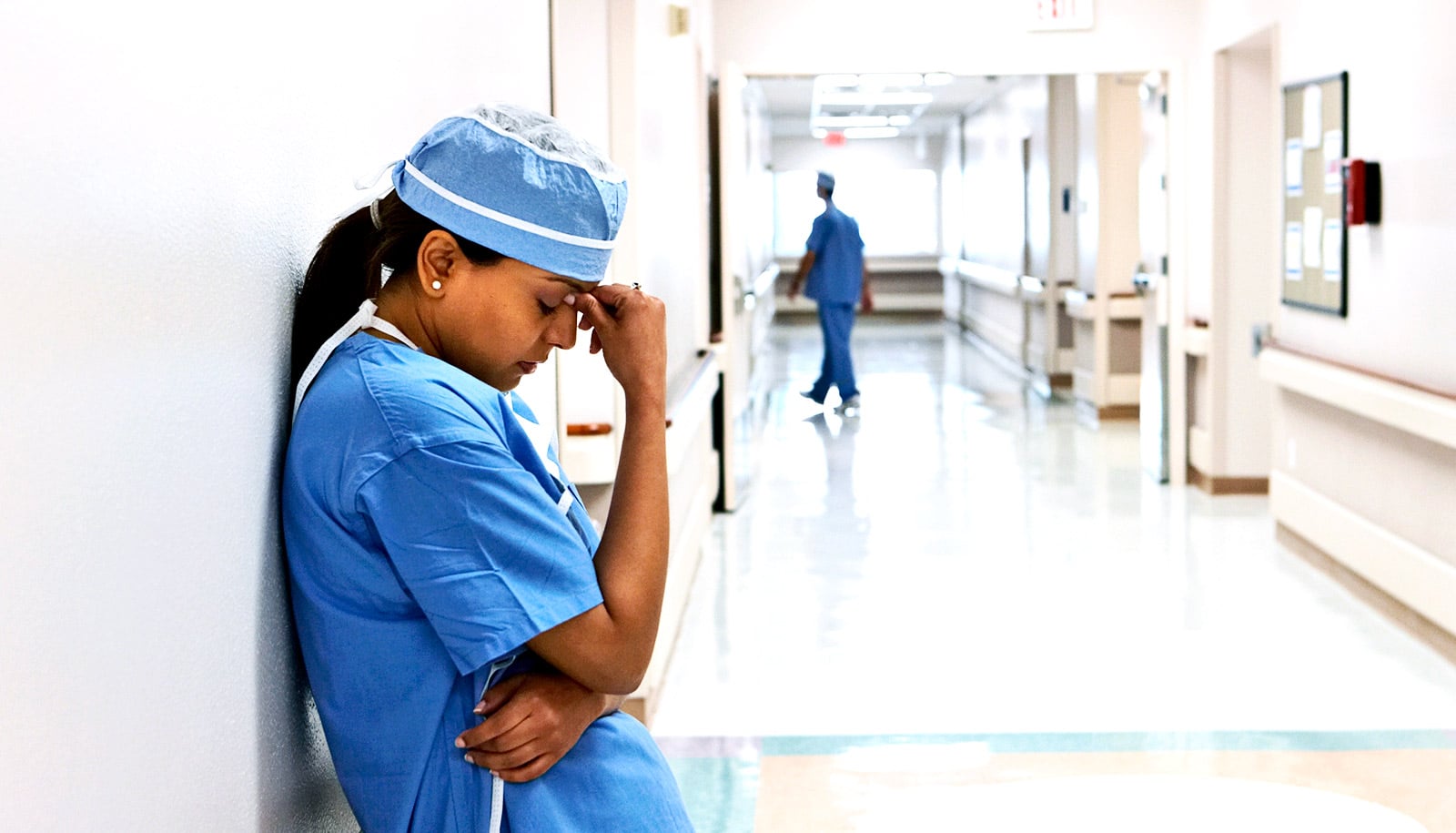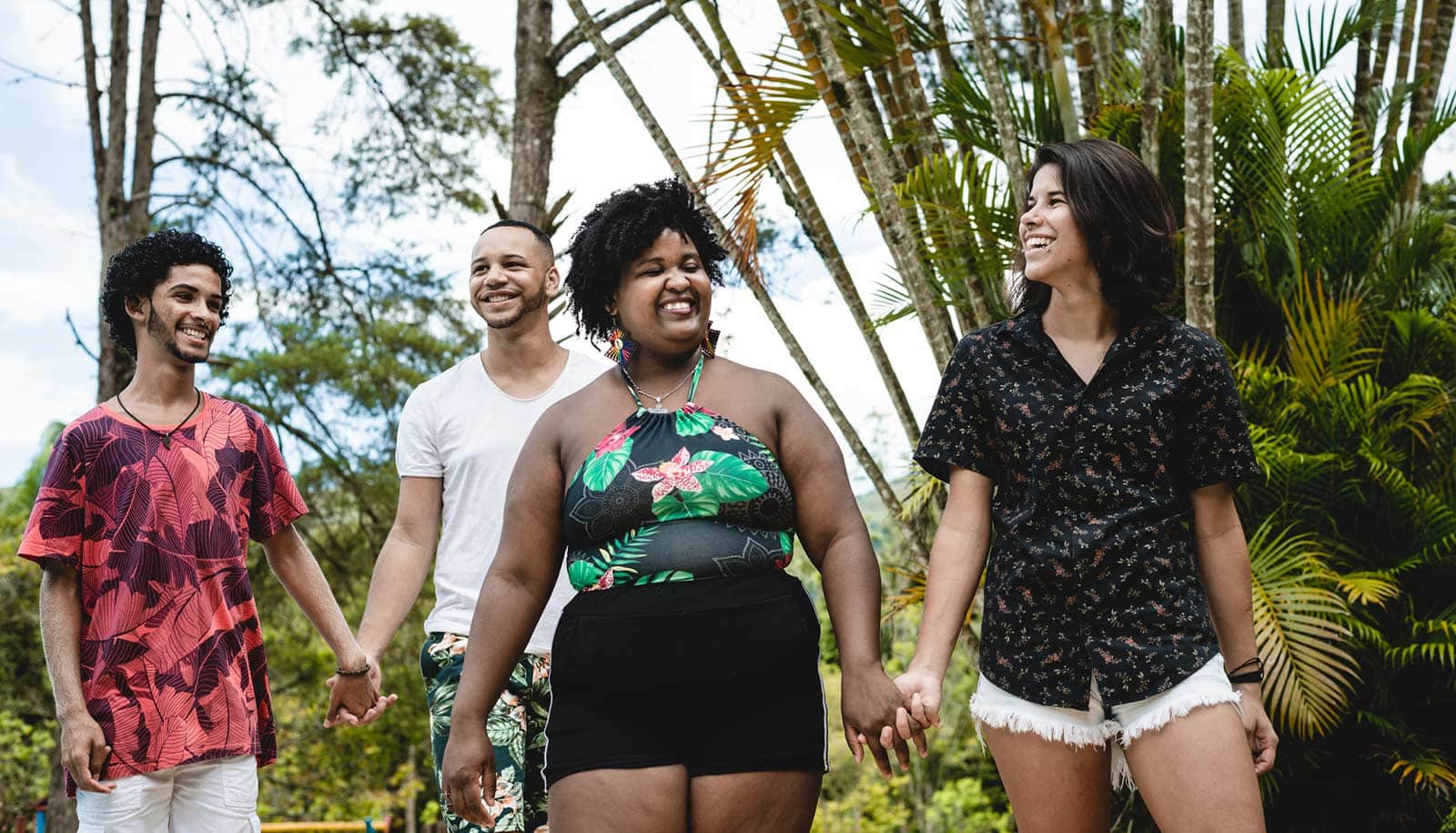Medical students who identify as lesbian, gay, or bisexual are more likely than their heterosexual peers to experience burnout, research finds.
Studies have shown that nearly half of all medical students in the US report symptoms of burnout, a long-term reaction to stress characterized by emotional exhaustion, cynicism, and feelings of decreased personal accomplishment. Beyond the personal toll, the implications for aspiring and practicing physicians can be severe, from reduced quality of care to increased risk of patient safety incidents.
The new study appears in the journal JAMA Network Open.
“The health and well-being of trainees is intimately linked to the quality of patient care, physician retention, and is key to reducing care inequities,” says lead author Elizabeth Samuels, an assistant professor of emergency medicine at the Warren Alpert Medical School of Brown University.
“Understanding how the current medical training environment impacts lesbian, gay, and bisexual medical students is critical for improving their training experience, building and retaining a workforce of LGB physicians, and also delivering optimal care to all patients—especially those who also identify as LGBTQI+.”
Samuels, who is a practicing emergency physician at Rhode Island Hospital and the Miriam Hospital, has focused previous research on equity and diversity in the health care workforce and the care of transgender and gender non-conforming people. Data from Association of American Medical Colleges’ annual survey of graduating medical school served as the basis for the new study.
“The impetus for this study came out of my own personal experiences as a medical trainee and as a mentor to medical students, as well as a person dedicated to addressing health inequities and improving care for LBGTQI+ patients,” Samuels says.
“When my collaborators and I learned that the AAMC had added questions about sexual orientation to their annual graduating medical student survey, we thought it would be a good opportunity to examine the experiences of LGB trainees generally, and more specifically, to examine whether medical student experiences of mistreatment and burnout varied by sexual orientation.”
Burnout survey
The study, conducted in collaboration with researchers from Yale University, is based on data from the 2016 and 2017 AAMC Medical School Graduation Questionnaire, a national survey that includes questions on everything from medical education to financial costs to clinical experiences. In the survey are questions about negative experiences (mistreatment, burnout) and identity, including sexual orientation. Response options include “heterosexual or straight,” “gay or lesbian,” and “bisexual.” The study combined the former into the category of LGB. Information about the gender identity of students who identify as transgender or genderqueer was not provided to the researchers for analysis.
In the study’s analysis of 26,123 total responses, 17% of LGB medical students reported high levels of burnout compared to 11.1% of heterosexual students.
“I think this shows people’s resiliency—up to a point.”
Potential causes of burnout include the intensity of medical training, strained finances, and unattainable expectations, the authors note in the study. Mistreatment is also a contributing factor, and there has been increased interest in examining its effects on trainees from racial and ethnic groups underrepresented in medicine. However, research has yet to focus specifically on LGB medical students.
“This is the first work that really looks at the relationship between sexual orientation and burnout and how that is mediated by mistreatment,” Samuels says.
Mistreatment and bias
In the study, LGB students also reported a higher frequency of perceived mistreatment. For example, 27% of LGB students reported being publicly humiliated, compared with 20.7% of heterosexual students; 23.3% reported perceived mistreatment specific to their sexual orientation at least once during medical school, compared with 1% of heterosexual students.
Samuels notes that mistreatment didn’t completely explain the emotional strain experienced by LGB medical students, who were 30% more likely to experience burnout even after adjusting for reported experiences of mistreatment.
The researchers found that LGB students reporting frequent experiences of mistreatment related to their sexual orientation had an 8 times higher likelihood of burnout compared to heterosexual students. This difference was dramatic when mistreatment occurred more frequently, Samuels says. But at lower levels of mistreatment, the differences weren’t as extreme.
“I think this shows people’s resiliency—up to a point,” Samuels says.
Samuels asserts that there are characteristics of medical training, separate from individual experiences of mistreatment, that leads to increased burnout among LGB trainees. After all, previous studies have shown that a high of LGB medical students report concealing their sexual identity during medical school for fear of discrimination. They also report more depression, anxiety, and low self-rated health compared with heterosexual students.
“Layering concerns about homophobia and discrimination on top of the general intensity of medical training can lead not just to burnout, but also to truly deleterious mental health effects,” Samuels says.
This can have far-reaching consequences, she notes, as the well-being of the health care workforce is strongly linked to the kind of care that providers are able to offer patients. These findings, she says, underscore the need for continued, comprehensive support and mentorship for LGBTQ medical students, and the importance of institutional culture change to create healthy, diverse, inclusive medical school learning environments.
“Not only is that helpful for individual trainees, but building this workforce is a key strategy in addressing health inequities experienced by LGBTQI+ communities everywhere,” Samuels says. “This study gives us a sense of where we are now, and how far we still need to go.”
The study took place in cooperation with the Association of American Medical Colleges. Funding came from a Society for Academic Emergency Medicine Academy for Diversity and Inclusion Research grant and the Northeast Group on Educational Affairs Research Grant Program.
Source: Brown University



